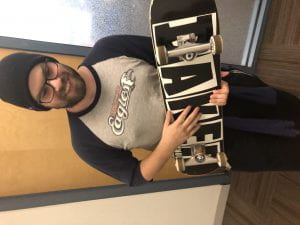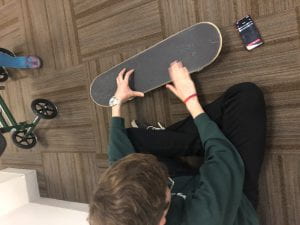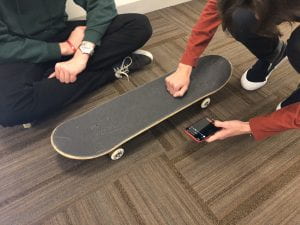https://www.youtube.com/watch?v=xUcAt83T_vw&feature=youtu.be
As the theme for the final project of the class was experience, I wanted to create something which reflected my own experiences within the class. With each project, there was always one that would make us do something that would put us out of my comfort zone and require us to behave strangely in social environments. Something else which I wanted to do was combine every project them we had done so far into one.
This led me to the idea of Scores Against Humanity. The rules are similar to those of Cards Against Humanity; all players draw three cards from the score pile and select which player will be the initial judge. The round starts randomly picking a generic location using a wheel containing a pre-selected list of locations. Then, all players apart from the judge will select a score that they think fits the location and place it in front of the judge. He will then shuffle the cards in order to be impartial and select the score which he prefers. In order for the player whose score has been selected to earn the point, he must perform it in the location generated at the start of the round, after which he becomes judge and the process is repeated until one of the players reaches three points.
The inspiration for the game came from many different places. For one, the scores used in the game all originate from Yoko Ono’s Grapefruit which we read for class. I selected those which I thought were the easiest to execute in a public space without too much preparation, allowing for easier gameplay. I also took inspiration from Marcel Duchamp’s LHOOQ, which consisted of putting a mustache and goaty on the Joconde as well as writing LHOOQ at the bottom of the poster. I did something similar for the title of my game, for which I swapped the Cards with Scores from Cards Against Humanity. This also fits well as the scores are being performed in a public space and therefore could be seen as them going against humanity present in these environments. I also thought that the way in which The Institute was mixing a game with real-life was very interesting and I wanted to do the same for my own game, which led to the decision of performing the scores in a public space.
As I playtested my game, I found that my goal of making players feel discomfort was achieved as I could observe them being hesitant to perform the scores at first due to the fact they were being observed. However, they became more confident over the period of the game in the same way I did during the semester as we did more in more things in public spaces, going from the cardboard box play session to the parachute intervention, without forgetting about Ryan’s screaming score.
In conclusion, this game appropriated Yoko Ono’s scores, created interventions in public spaces and made the players experience discomfort, bringing all the different parts into one.



